Lam Kinh Complex

Lam Kinh is an ancient capital built by King Le Loi in 1428 - the first King of the Later Le Dynasty. This place was built as a citadel in the king's hometown to worship ancestors and for the kings to rest. The complex is divided into three main areas: the Royal Citadel, the Temple, and the Palace Complex.
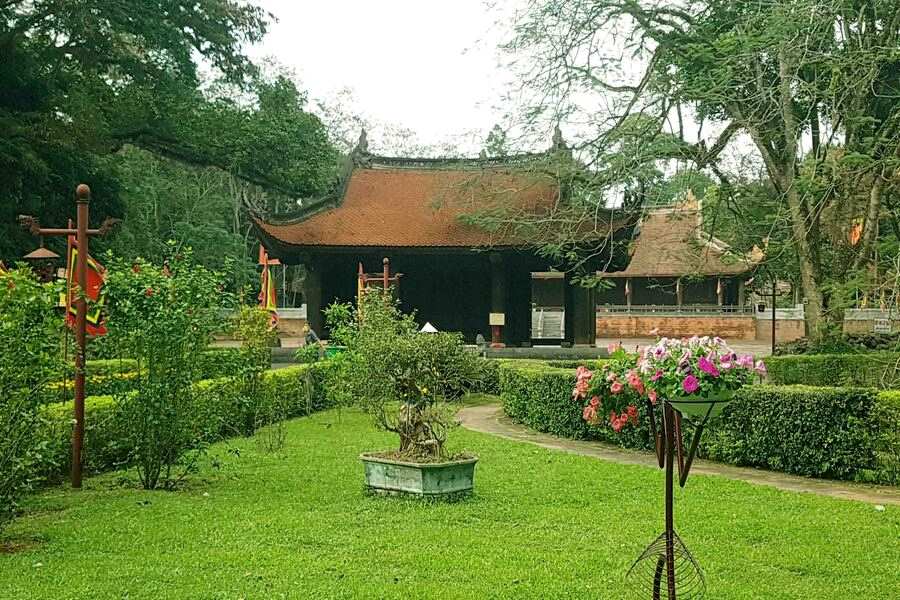
The garden in front of the Royal Citadel
Lam Kinh is also known as Tay Kinh (Western Capital). This name is intended to distinguish it from the official capital Dong Kinh (Eastern Capital), Hanoi nowadays. In 2012, the complex was recognized as a “Special National Relic”.
Let Asia King Travel show you the unique traits of Le Feudal Relic right below.
The Lam Kinh Complex is in Tho Xuan District, Thanh Hoa Province, Vietnam. It’s roughly 180 kilometers southwest of the capital Hanoi. It takes about 3 hours drive from Hanoi or 1 hour from Thanh Hoa City. There is a parking lot on site.
Suggested for you: Hue Discovery: 3-Day Journey into Vietnam's Historic Heartland
Lam Kinh has a prime position according to oriental geomancy: “Leaning against a mountain and looking toward a river”. It helps Lam Kinh always be prosperous and peaceful.

Mock-up of Lam Kinh Complex and surrounding terrain
The Dau mountain is in the back of Lam Kinh, while the Huong and Ham Rong mountains can be found in the west. The site faces the Chu River in the south and is guarded by Chua Mountain. The architecture comprises the southern gate, dragon royal court, central palace, and royal ancestral temple. All of them remain intact to this day.
You can visit Lam Kinh at any time of the year. However, it is best to plan your visit during the Lam Kinh Festival, which takes place annually on the 21st and 22nd days of the eighth lunar month (around October or early November).
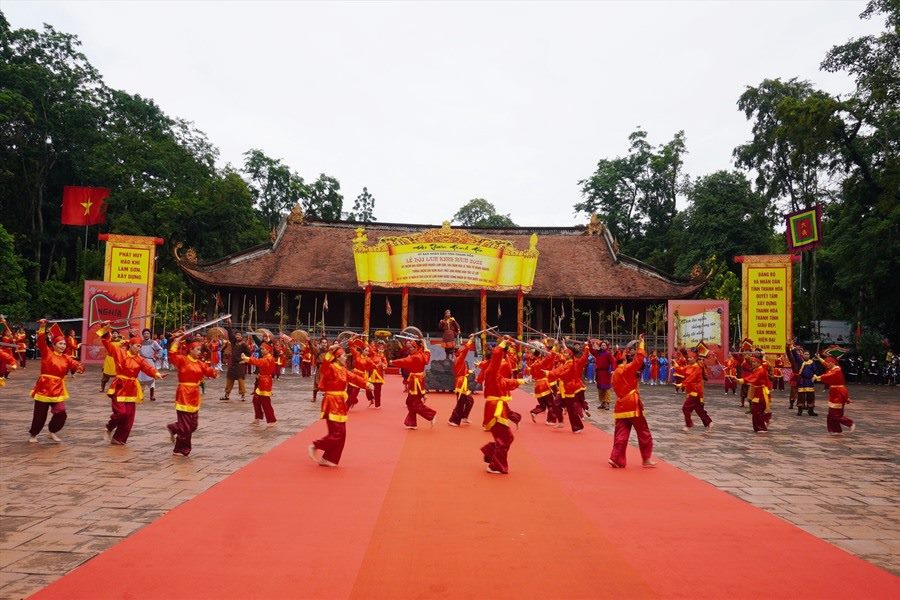
Reenacting the liberation against the Ming invaders in the Lam Kinh Festival
The Lam Kinh Festival is held annually after the passed away of King Le Thai To, the founder of the Le Dynasty. It is held to pay tribute to this national hero and commemorate his legacy. The festival is celebrated on a grand scale and attracts a lot of both locals and tourists.
White Bridge (formerly known as Tien Loan Kieu Bridge) over the Ngoc River, serves as the main entrance to the Lam Kinh Citadel. The bridge is designed in a unique architectural style prevalent in East Asian countries, featuring a structure with a house on top and a bridge underneath.
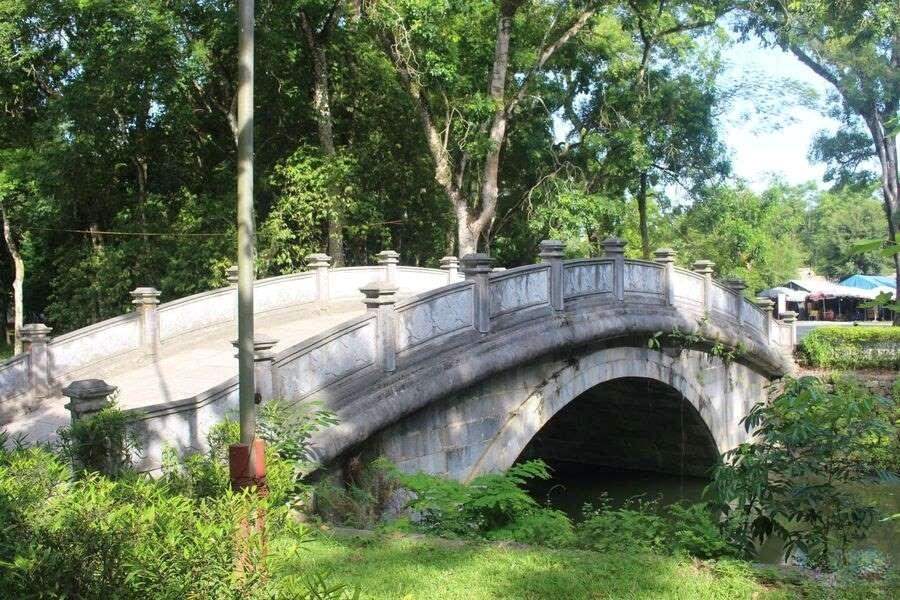
The bridge gets its name from the color
About 50 meters from White Bridge lies the Jade Well, which provided water for Lam Kinh. The Jade Well is clear and full of water all year round. In the past, lotus flowers were grown in the well, they bloomed beautifully and fragrantly in season.
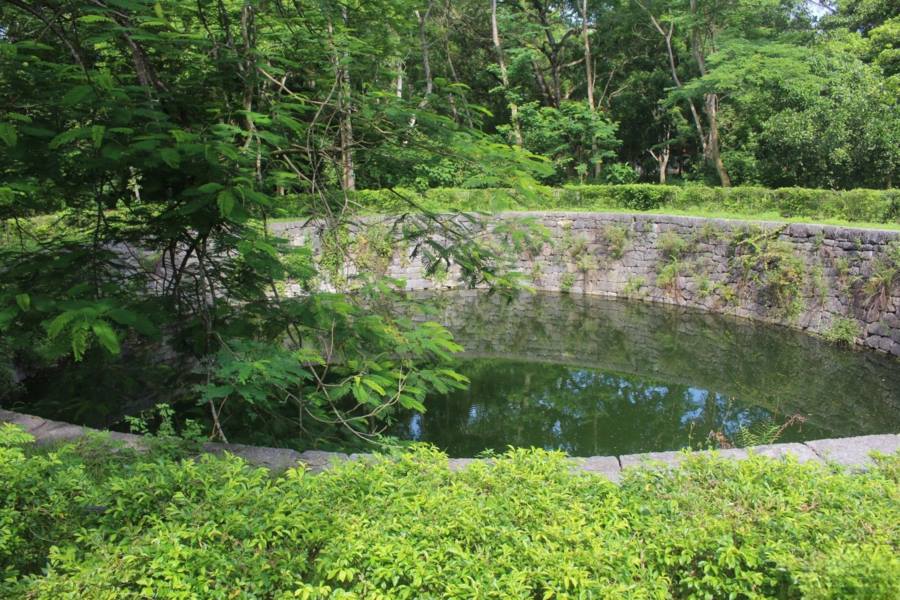
The water in the well is as green as precious jade
To enter the Royal Citadel, you must pass through the Ngo Mon Gate, which is nearly 20 meters wide. In front of the Ngo Mon gate, you will see two stone guardian lions that are hundreds of years old.
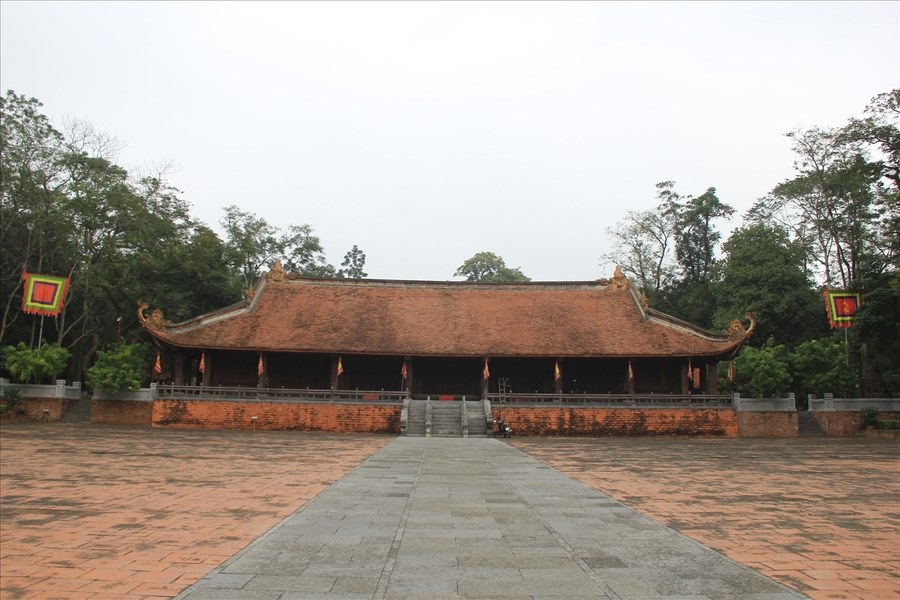
Large Dragon Yard and the Main Palace
The yard inside Ngo Mon Gate is called “Dragon Yard”. The yard spreads across the width of the area and close to the Main Palace with a total area of 3539 square meters. The path leading from the Dragon Yard to the Main Palace has a large step with 9 steps with 3 paths decorated with flying dragon-carved stone.
Lam Kinh Temple is an area dedicated to worshipping the ancestors, kings, and queens of the Le Dynasty. It is a complex of nine imposing structures located directly behind the main palace. The site exudes solemnity and respectful atmosphere.

The temple is located behind the Main Palace
Le Loi Mausoleum is called “Vinh Lang”, meaning the mausoleum that lasts for eternity. It measures 4.4 meters by 1 meter and was constructed using rammed earth with surrounding carved stone reinforcements.
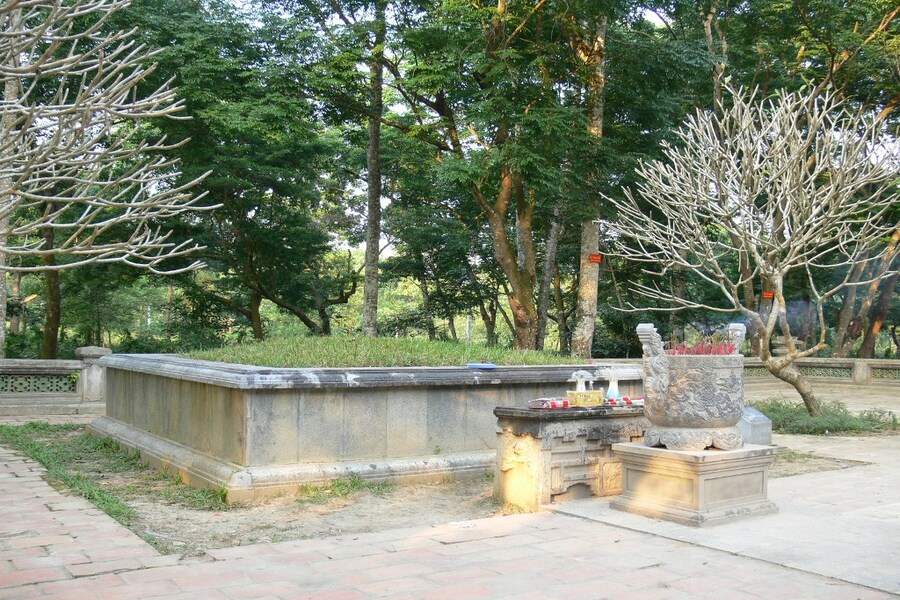
Le Loi’s tomb in the Mausoleum
In front of the mausoleum are two rows of statues depicting court officials. While four pairs of stone animal statues (lion, horse, rhinoceros, tiger) stand firmly, guarding the site.
After visiting the relic site, don't forget to stop by the artifact display house to learn more about the history of the Le dynasty and the mysterious stories here.
The display house still reserves ancient artifacts of historical value such as Le dynasty teacups, bronze pots, lotus-shaped incense bowls, decorative leaf-shaped bricks, and White Bridge’s pieces base. All are still in their original form and are carefully cleaned regularly.

Artifacts are introduced in detail inside the display house
The Lam Kinh Complex is open to the public for exploration daily. Its opening hours are from 7:00 AM to 5:00 PM. You will have to pay the entrance fee of VND 40 000 for adults and VND 20 000 for children. Besides, you might have to charge for parking fee or sanitary fee services.
Lam Kinh is not only a historical site, it also has beautiful and peaceful scenery. This place is extremely suitable for a short vacation. Plan and make a trip to explore the ancient capital now! We hope you have interesting experiences in the land of heroes.
Suggested for you: Vietnam Tours 5 days